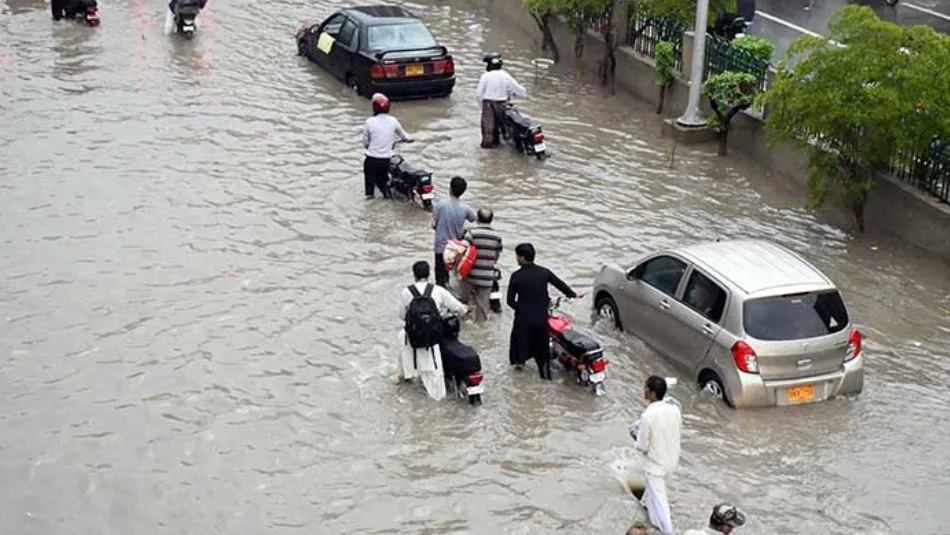Lahore, Pakistan’s second-largest city with a population of 13 million, experienced unprecedented monsoon rainfall on Thursday, breaking a 44-year-old record. The city recorded nearly 360 millimeters of rain, surpassing the previous record of 332 millimeters set in July 1980.
This torrential downpour led to significant casualties and property damage. At least four people, including a young girl, lost their lives, and seven others sustained injuries due to electrocution and roof collapses. The heavy rain resulted in flooded streets, disrupted power supplies, and submerged hospitals, plunging Lahore into chaos.
Infrastructure Strain and Emergency Measures
The unprecedented rainfall inundated various parts of Lahore, crippling infrastructure and leading to multiple incidents of damage and loss. In Nishat Colony, a youth was electrocuted near an electricity pole, while a 14-year-old boy drowned in rainwater in Kot Lakhpat. An additional casualty occurred in Defence Phase VII due to electrocution from an exposed wire.
Read More: Telecom Sector Performance and Future Discussed in Senate
Roof collapses in Nishtar Colony and near Shaukat Khanum Chowk resulted in one fatality and injuries to seven others. The flooding also caused damage in the suburban town of Kahna, where seven goats were killed under a collapsed wall. Punjab Chief Minister Maryam Sharif announced that the entire government machinery was mobilized to manage the crisis and drain the accumulated water.
Government and Meteorological Responses
The Pakistan Meteorological Department (PMD) described the rainfall as “torrential” and noted that while the intensity of the rain might decrease, intermittent showers are expected to continue until the evening.
Chief Meteorologist Sardar Sarfaraz mentioned that the monsoon season this year has been forecasted to be wetter than usual, with several parts of the country, including Lahore, experiencing heavy rains. The PMD’s deputy director Farooq Dar emphasized that this was a record-breaking event and that the country should brace for further rain from August 1-6.
Future Outlook and International Context
The Provincial Disaster Management Authority (PDMA) highlighted that water levels in rivers and dams were rising, with potential moderate to high-level flooding expected. This comes in the wake of similar extreme weather events globally, such as landslides in India’s Kerala, which resulted in significant loss of life.
Pakistan’s vulnerability to extreme weather, intensified by climate change, underscores the urgent need for effective disaster management and infrastructure improvement. Earlier this year, the country faced severe heatwaves, and April was the wettest month since 1961, with numerous fatalities from storm-related incidents.
City-Wide Impact and Recovery Efforts
In response to the disaster, Lahore’s commissioner declared an emergency and ordered the closure of offices and schools. Hospitals near the Indian border reported flooding in their wards, and power outages persisted. The Water and Sanitation Agency (WASA) and other authorities were deployed to manage drainage operations, with additional machinery provided to expedite water removal from low-lying areas. The PDMA advised residents to take precautions, including avoiding unnecessary travel and staying away from electrical hazards.
The monsoon season, while crucial for agriculture, poses significant risks due to changing weather patterns. As Pakistan navigates this challenging period, the focus remains on managing immediate impacts and preparing for future climate-related challenges.














